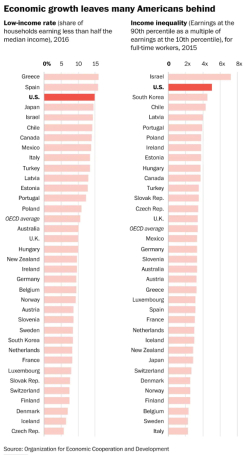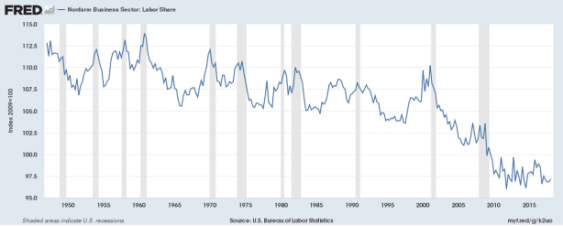From David Ruccio and Jamie Morgan and the current issue of RWER What we’re seeing then, especially in the United States, is a self-reinforcing cycle of high profits, low wages, and even higher profits. That’s why the labour share of business income has been falling throughout the so-called “recovery”:[1] Eric Levitz in a July 2018 article in New York Magazine states that in the end this is political, as “American policymakers have chosen to design an economic system that leaves workers desperate and disempowered, for the sake of directing a higher share of economic growth to bosses and shareholders.”[2] Productivity, automation, etc. on which economists focus are simply issues within that system. American workers (and workers in general) are being “ripped off”. Nowhere is this seen
Topics:
Editor considers the following as important: Uncategorized
This could be interesting, too:
tom writes The Ukraine war and Europe’s deepening march of folly
Stavros Mavroudeas writes CfP of Marxist Macroeconomic Modelling workgroup – 18th WAPE Forum, Istanbul August 6-8, 2025
Lars Pålsson Syll writes The pretence-of-knowledge syndrome
Dean Baker writes Crypto and Donald Trump’s strategic baseball card reserve
from David Ruccio and Jamie Morgan and the current issue of RWER
What we’re seeing then, especially in the United States, is a self-reinforcing cycle of high profits, low wages, and even higher profits. That’s why the labour share of business income has been falling throughout the so-called “recovery”:[1]
Eric Levitz in a July 2018 article in New York Magazine states that in the end this is political, as “American policymakers have chosen to design an economic system that leaves workers desperate and disempowered, for the sake of directing a higher share of economic growth to bosses and shareholders.”[2] Productivity, automation, etc. on which economists focus are simply issues within that system. American workers (and workers in general) are being “ripped off”. Nowhere is this seen more clearly than in ratios of CEO-to-average-worker-pay. read more
[1] https://anticap.files.wordpress.com/2018/07/fredgraph.png. The graph maps the precipitous decline in the labor share during the past decade (from 103.3 in the first quarter of 2008 to 97.1 in the first quarter of 2018, with 2009 equal to 100), but the trend is longer: from 114 in 1960 or 112 in 1970 or even 110.2 in 2001.
[2] http://nymag.com/daily/intelligencer/2018/07/oecd-study-labor-conditions-confirms-that-u-s-workers-are-getting-ripped-off.html


